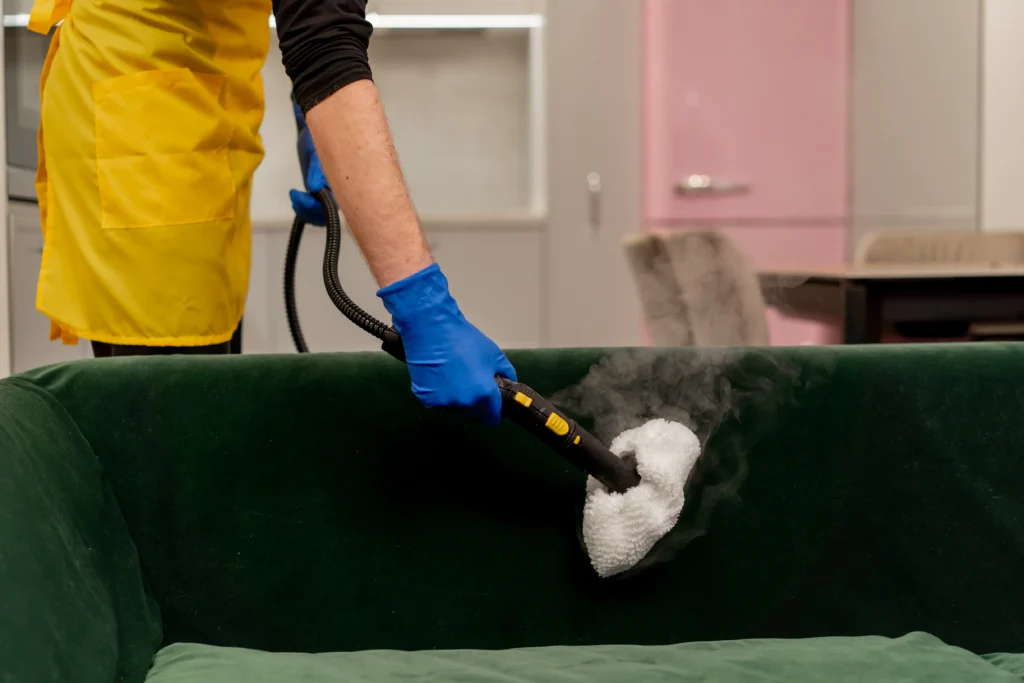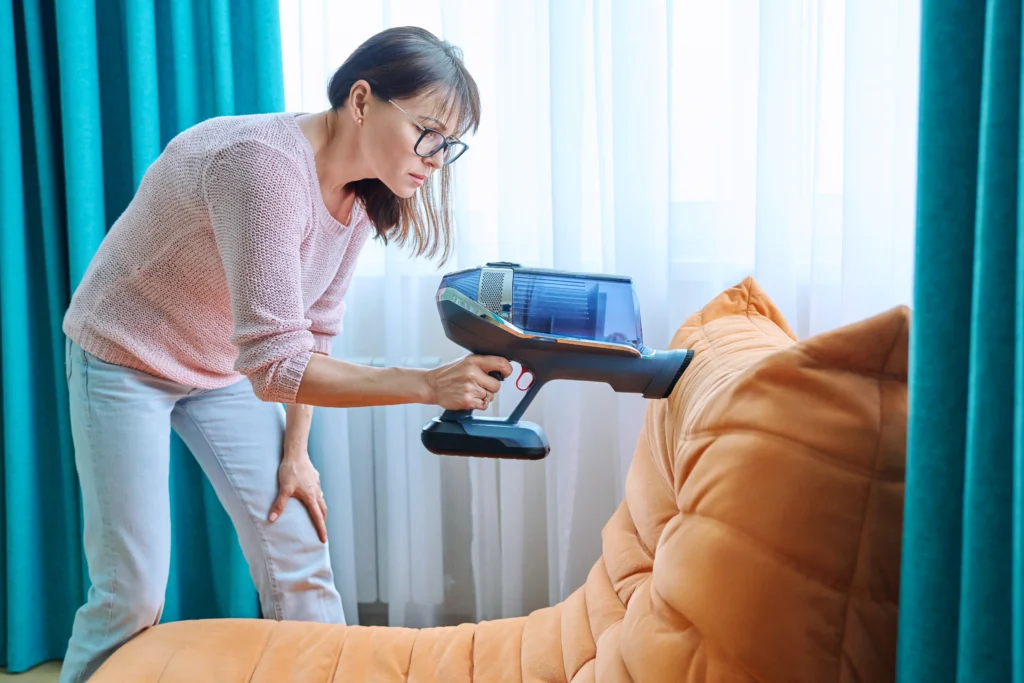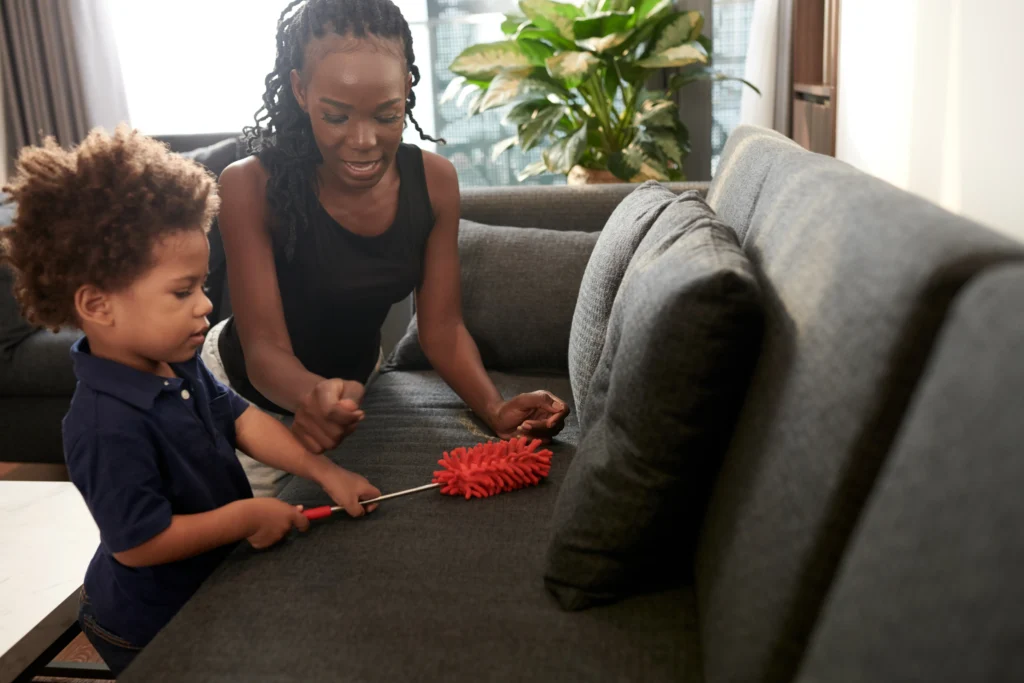Linen upholstery is a stylish and breathable fabric choice for furniture, offering both comfort and durability. However, due to its natural fibers, linen can be prone to stains, wrinkles, and general wear over time. Proper cleaning techniques help maintain its fresh appearance while preserving the fabric’s texture and integrity. Let’s go over how to clean linen upholstery.

Understanding Linen Upholstery
Linen is a natural fiber derived from the flax plant. It is known for its lightweight feel and elegant texture but requires special care to prevent shrinkage and damage. Linen upholstery often has a protective coating to resist stains, but regular maintenance is essential to keep it looking its best.
Before cleaning linen furniture, checking the upholstery tag for cleaning codes ensures the safest method for the fabric:
- W – Water-based cleaners can be used.
- S – Solvent-based cleaners are recommended.
- WS – Both water- and solvent-based cleaners are safe.
- X – Professional cleaning only; avoid water or solvents.

Regular Maintenance for Linen Upholstery
Routine cleaning prevents dirt buildup and extends the lifespan of linen furniture. Vacuuming weekly with an upholstery brush attachment helps remove dust and debris from the fabric. To prevent fading, keeping linen furniture out of direct sunlight preserves its color and texture.
Brushing the fabric gently with a soft-bristled brush restores its smooth surface and reduces the appearance of wrinkles. Lightly steaming linen upholstery can also help maintain its shape and eliminate minor creases.
Spot Cleaning Linen Upholstery
When spills occur, acting quickly prevents stains from setting. Blotting the affected area with a clean, dry cloth absorbs excess liquid before it penetrates the fibers. Using a mixture of mild dish soap and warm water, gently dabbing the stain with a cloth helps lift residue without soaking the fabric.
For tougher stains, a mixture of white vinegar and water can be an effective natural cleaner. Applying the solution with a clean cloth and allowing the area to air dry ensures that the linen does not retain excess moisture. Always test any cleaning solution on an inconspicuous area before applying it to a visible part of the upholstery.

Deep Cleaning Linen Furniture
Over time, linen upholstery benefits from a deeper clean to remove embedded dirt and odors. A fabric-safe upholstery cleaner designed for natural fibers can be used to refresh the fabric without causing damage. Using a small amount and blotting the area with a damp cloth ensures that no excess moisture remains in the fabric.
Steam cleaning can be an effective method for deep cleaning linen upholstery, but it should be done with caution. Using a low heat setting and keeping the steamer at a slight distance from the fabric prevents shrinkage. For heavily soiled linen furniture, professional upholstery cleaning ensures a thorough clean without the risk of fabric damage.
Preventing Stains and Wear on Linen Upholstery
Applying a fabric protector specifically designed for linen helps create a barrier against spills and dirt. Using slipcovers or decorative throws can reduce daily wear while maintaining the furniture’s elegant appearance. Rotating and flipping cushions regularly distributes wear evenly, preventing one area from becoming overly worn or faded.

Useful Resources
- Learn more about how to care for natural fabric upholstery from Architectural Digest.
- Discover eco-friendly cleaning solutions for fabric furniture from Good Housekeeping.
Conclusion
Linen upholstery requires gentle care and regular maintenance to preserve its texture and longevity. Vacuuming, spot cleaning with mild solutions, and occasional deep cleaning help keep linen furniture fresh and elegant. For long-term upkeep, professional upholstery cleaning services ensure a deep clean without damaging the delicate fabric, maintaining its beauty for years to come.


